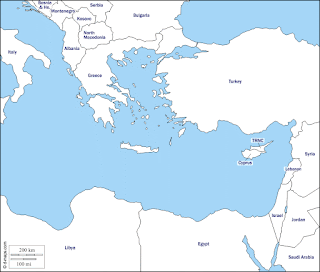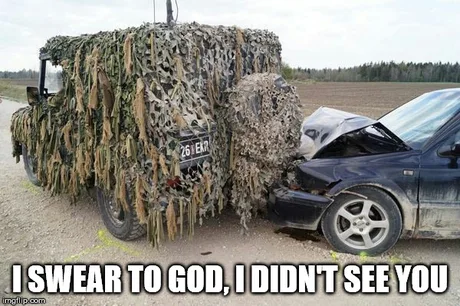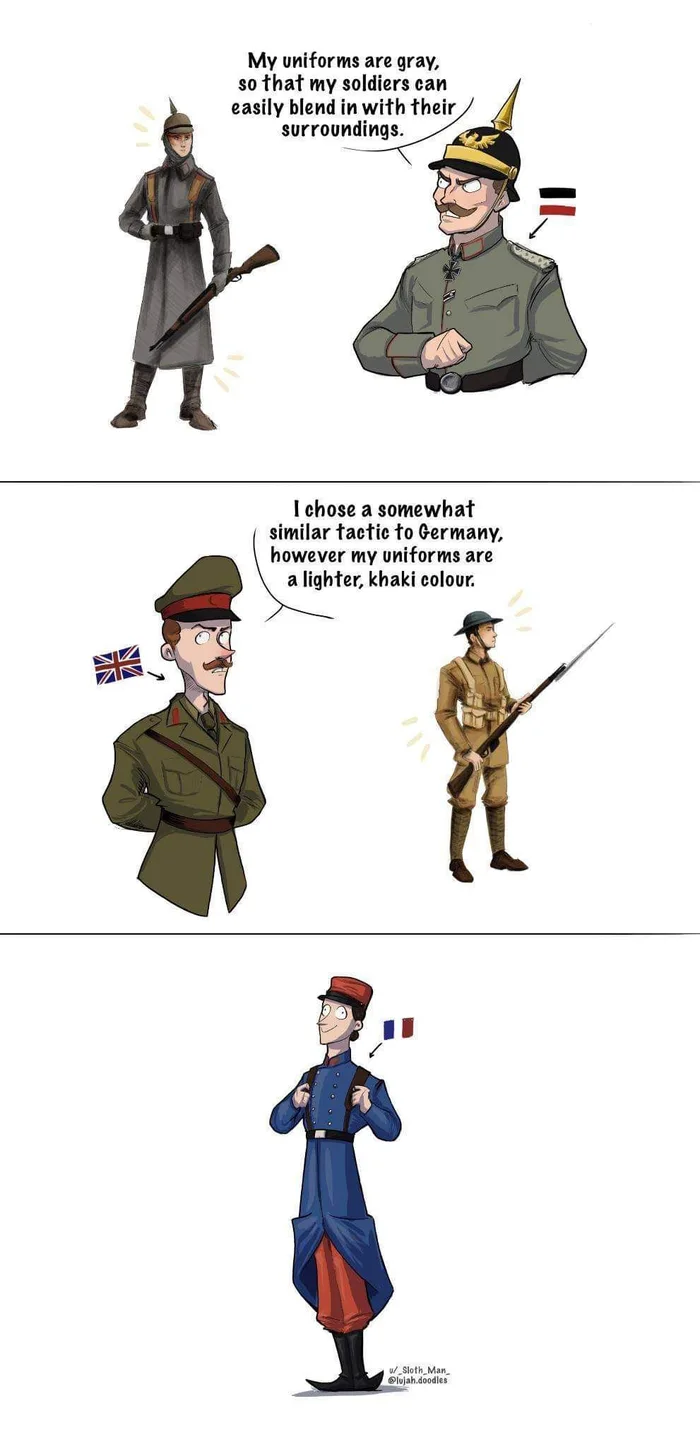 |
| Sun Tzu artist's impression from Qīnggōngdiàn Cánghuàběn 清宮殿藏畫本 / 清宫殿藏画本 |
VI. Weak Points and Strong
1. Sun Tzu said: Whoever is first in the field and awaits
the coming of the enemy, will be fresh for the fight; whoever is second
in the field and has to hasten to battle will arrive
exhausted.
Pre-19th century battles were often about two armies having (fortified) camps a few kilometres apart, then on some day moving onto a field between them, forming their battle order and commencing battle. Modern battles are vastly different unless you consider battles initiated during a trench war.
Sun Tzu's recipe for the advantage of fresher troops is mostly incompatible with achieving surprise, save for the option of an ambush (example Battle at Lake Trasimene).
2. Therefore the clever combatant imposes his will on the enemy, but does not allow the enemy's will to be imposed on him.
This is a bit funny, as Carl von Clausewitz considered the purpose of war to be to force our will on the opposing faction. He thought about this on the strategic level, whereas Sun Tzu mentions it as a means (rather than an end) in tactics.
3. By holding out advantages to him, he can cause the enemy to approach of his own accord; or, by inflicting damage, he can make it impossible for the enemy to draw near.
This can easily be underestimated. I wrote about the low-profile feature of the effect of repulsive firepower a decade ago. Most of the effect of firepower is about what does NOT happen in battle.
4. If the enemy is taking his ease, he can harass him; if
well supplied with food, he can starve him out; if quietly encamped, he
can force him to move.
5. Appear at points which the enemy must hasten to defend;
march swiftly to places where you are not expected.
It is difficult to identify any points that one would absolutely have to defend in a NATO defensive war. Warsaw maybe. Or a point at which an army would complete an encirclement. Then again, it's doubtful whether there are really enough troops to encircle even only a brigade in the ways known from 1870-1945 (though encirclements were often leaky in 1941-1944 already).
6. An army may march great distances without distress, if it marches through country where the enemy is not.
The need for providing 360° security is indeed slowing very much unless the leader decides to be audacious. Small intelligence leads, noises heard, deception, reports of skirmishes - many things can signal a flank threat that could destroy a brigade on the march. Every single such threat would have to be secured against, which takes time and resources. IIRC Ferdinand Foch had a great example for this in his "Principles of War" book. An entire corps had insufficient scouts and thus arrived too late to a battle, as lots of perceived flank threats slowed it down.
An alternative is to march in such small manoeuvre elements that they do not need to be secured themselves. This may work fine for combat and reconnaissance troops, but it might suffice to manoeuvre as a battalion battlegroup (less than 1,000 personnel and ~100 motor vehicles). To move in small elements may largely free them from the need to have security elements forward and on the flanks and greatly increase tactical mobility. Another possibility to achieve this is to approximate full area surveillance. Having observation teams with effective radio links almost everywhere in the area of operations would free a manoeuvre force from the need for security elements.
7. You can be sure of succeeding in your attacks if you only attack places which are undefended. You can ensure the safety of your defense if you only hold positions that cannot be attacked.
Almost no position (or fortress) could really be held against determined attack. Hochosterwitz comes to mind, or those weird Spanish cannon ball-gulping forts. Field fortifications were usually weak. Even some of the most elaborate ones of the World Wars were eventually overcome.
8. Hence that general is skillful in attack whose opponent
does not know what to defend; and he is skillful in defense whose opponent
does not know what to attack.
9. O divine art of subtlety and secrecy! Through you we
learn to be invisible, through you inaudible; and hence we can hold the
enemy's fate in our hands.
10. You may advance and be absolutely irresistible, if you
make for the enemy's weak points; you may retire and be safe from pursuit
if your movements are more rapid than those of the enemy.
Pursuit was up to the 19th century mostly about pursuit by cavalry. Cavalry is quicker than infantry, so an infantry army cannot escape it. The Chinese of Sun Tzu's time did use chariots instead of cavalry, and chariots are not all that great for pursuit because the withdrawing enemy can usually avoid chariot-friendly terrain.
An infantry army can escape a pursuing infantry army, but this may entail the loss of some broken-down vehicles and escape is likely more about obstacles and a delaying rearguard or about exploiting a choice of routes that a pursuer cannot guess than it was about actually marching quicker.
So I suppose he badly missed the point here. His statement is trivially true, but of little practical utility.
11. If we wish to fight, the enemy can be forced to an engagement
even though he be sheltered behind a high rampart and a deep ditch. All
we need do is attack some other place that he will be obliged to
relieve.
12. If we do not wish to fight, we can prevent the enemy
from engaging us even though the lines of our encampment be merely traced
out on the ground. All we need do is to throw something odd and unaccountable
in his way.
13. By discovering the enemy's dispositions and remaining
invisible ourselves, we can keep our forces concentrated, while the enemy's
must be divided.
This looks rather meaningless, as staying "invisible" usually requires counterreconnaissance ambushes and patrols, which of course run counter to concentration of forces. The Americans obsessed about counterreconnaissance for a while prior to 2003 based on their NTC training experiences, but there is little military history evidence that reconnaissance or scouting can really be prohibited. The Western Allies' ability to impede German aerial reconnaissance in 1944/45 comes probably the closest.
14. We can form a single united body, while the enemy must
split up into fractions. Hence there will be a whole pitted against separate
parts of a whole, which means that we shall be many to the enemy's
few.
15. And if we are able thus to attack an inferior force
with a superior one, our opponents will be in dire straits.
Quantitative military history research has actually revealed a weak to non-existing correlation between numerical superiority in battle and "victory" in battle. I suppose that army leaders denied battle if they expected defeat, thus offered battle in situations of numerical inferiority rather if they have other superiorities.
16. The spot where we intend to fight must not be made known; for then the enemy will have to prepare against a possible attack at several different points; and his forces being thus distributed in many directions, the numbers we shall have to face at any given point will be proportionately few.
This is the tactical view, whereas Carl von Clausewitz took an opposing, strategic view. CvC meant the battle to be decisive. The defeated party had to suffer great losses, so targeting few enemies at once would seem indecisive towards winning the war. Sun Tzu took the tactical view and emphasised winning the battle (or skirmish). CvC's recipe for this was largely about assembling an overwhelming force.
17. For should the enemy strengthen his van, he will weaken his rear; should he strengthen his rear, he will weaken his van; should he strengthen his left, he will weaken his right; should he strengthen his right, he will weaken his left. If he sends reinforcements everywhere, he will everywhere be weak.
The last sentence fits to the 18th century saying attributed to Frederick II. the Great: He who defends everything, defends nothing. This may be somewhat obsolete at least in some niches, though. Area air defences may actually prove superior to short range air defences, and artillery fires affect such a radius now that artillery concentrations are more about fires missions than about deployment orders. Moreover, some low force density paradigms such as guerilla warfare strive seem to have no use for this maxim.
18. Numerical weakness comes from having to prepare against possible attacks; numerical strength, from compelling our adversary to make these preparations against us.
That's known as battlefield shaping operations. You improve the odds of tactical success in advance of the actual clash of major forces. This is badly hindered by casualty aversion, as many battlefield shaping ops require to expose few troops to great danger. Modern Western ground forces may be very lacking in this area.
19. Knowing the place and the time of the coming battle, we may concentrate from the greatest distances in order to fight.
This implies the well-known maxim "march divided and fight united".
20. But if neither time nor place be known, then the left wing will be impotent to succor the right, the right equally impotent to succor the left, the van unable to relieve the rear, or the rear to support the van. How much more so if the furthest portions of the army are anything under a hundred LI apart, and even the nearest are separated by several LI!
(A Li was about 416 m at the time. Effective archery range was about half that.)
21. Though according to my estimate the soldiers of Yueh
exceed our own in number, that shall advantage them nothing in the matter
of victory. I say then that victory can be achieved.
22. Though the enemy be stronger in numbers, we may prevent
him from fighting. Scheme so as to discover his plans and the likelihood
of their success.
23. Rouse him, and learn the principle of his activity or
inactivity. Force him to reveal himself, so as to find out his vulnerable
spots.
24. Carefully compare the opposing army with your own, so
that you may know where strength is superabundant and where it is
deficient.
25. In making tactical dispositions, the highest pitch you
can attain is to conceal them; conceal your dispositions, and you will
be safe from the prying of the subtlest spies, from the machinations of
the wisest brains.
26. How victory may be produced for them out of the enemy's
own tactics-that is what the multitude cannot comprehend.
27. All men can see the tactics whereby I conquer, but what
none can see is the strategy out of which victory is
evolved.
28. Do not repeat the tactics which have gained you one
victory, but let your methods be regulated by the infinite variety of
circumstances.
Suvorov actually succeeded in 60+ battles without being a very versatile tactician. The real question isn't whether you have done it before or whether the opponent expects it, but whether your opponent has devised a countermeasure and is able to implement it. This is nowadays extremely important and troublesome in regard to high tech weaponry. Many "high tech" weapons and munitions may be utter failures due to existing countermeasures - without us knowing for certain, as we haven't used them in anger against capable opposition yet.
29. Military tactics are like unto water; for water in its
natural course runs away from high places and hastens
downwards.
30. So in war, the way is to avoid what is strong and to
strike at what is weak.
31. Water shapes its course according to the nature of the
ground over which it flows; the soldier works out his victory in relation
to the foe whom he is facing.
Robert Leonhard hammered this into his readers as "all warfare is adversarial". This is an important distinction to many other human endeavours. It's also putting into question the wisdom of trusting old, long-published treatises about the art of war!
32. Therefore, just as water retains no constant shape,
so in warfare there are no constant conditions.
33. He who can modify his tactics in relation to his opponent
and thereby succeed in winning, may be called a heaven-born
captain.
34. The five elements (water, fire, wood, metal, earth)
are not always equally predominant; the four seasons make way for each
other in turn. There are short days and long; the moon has its periods
of waning and waxing.
S O
defence_and_freedom@gmx.de
.





